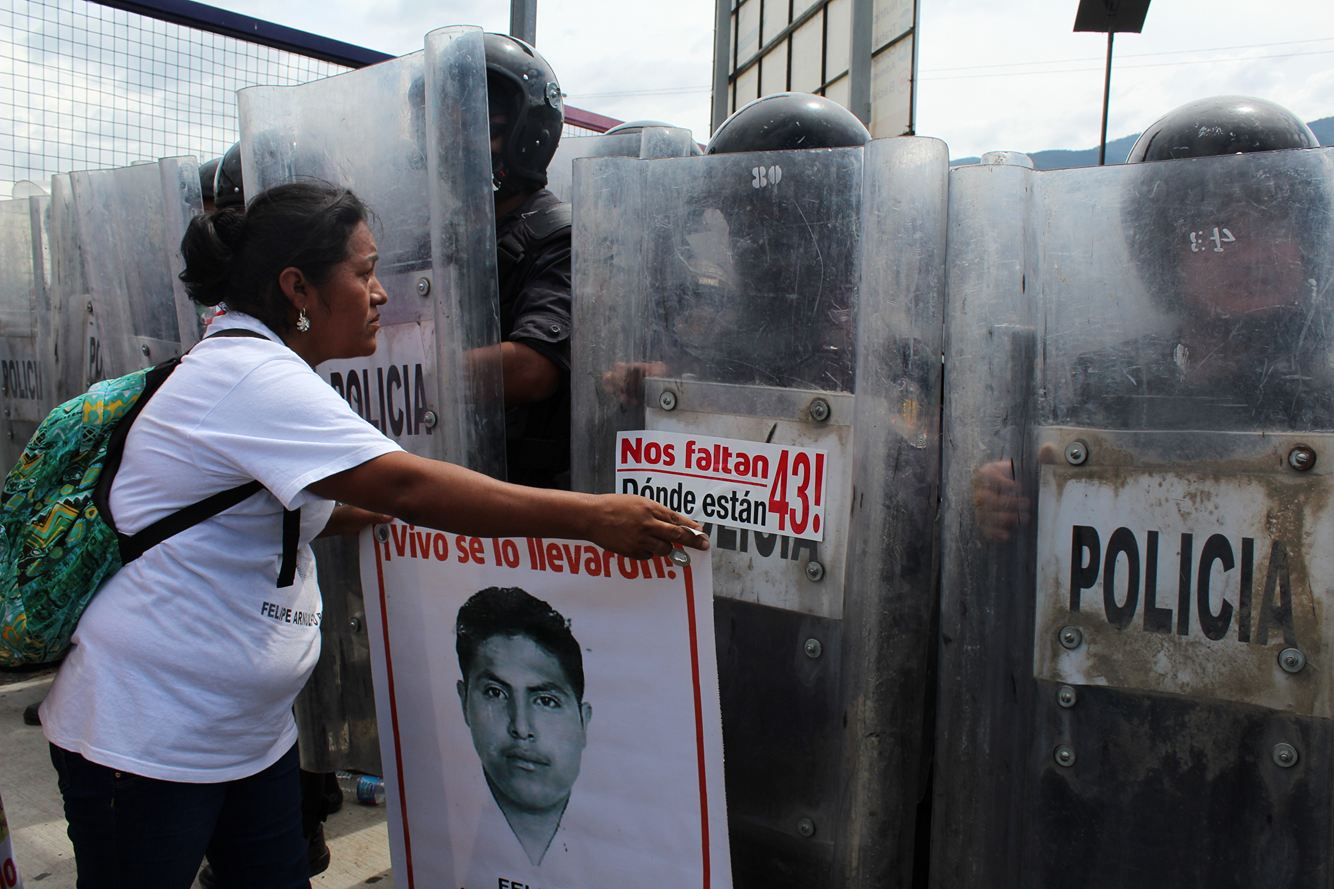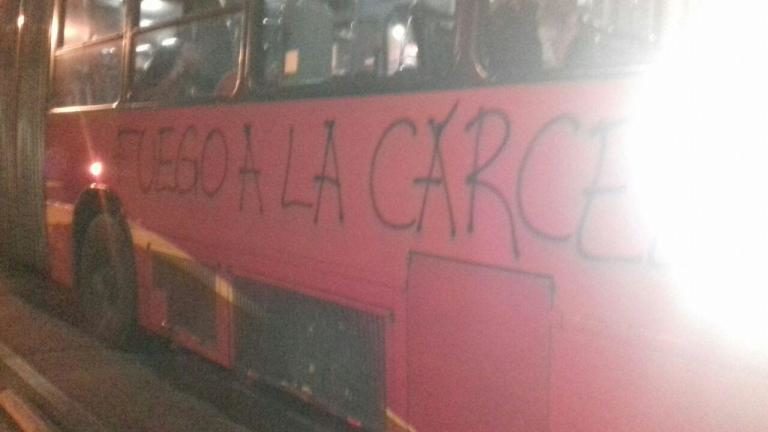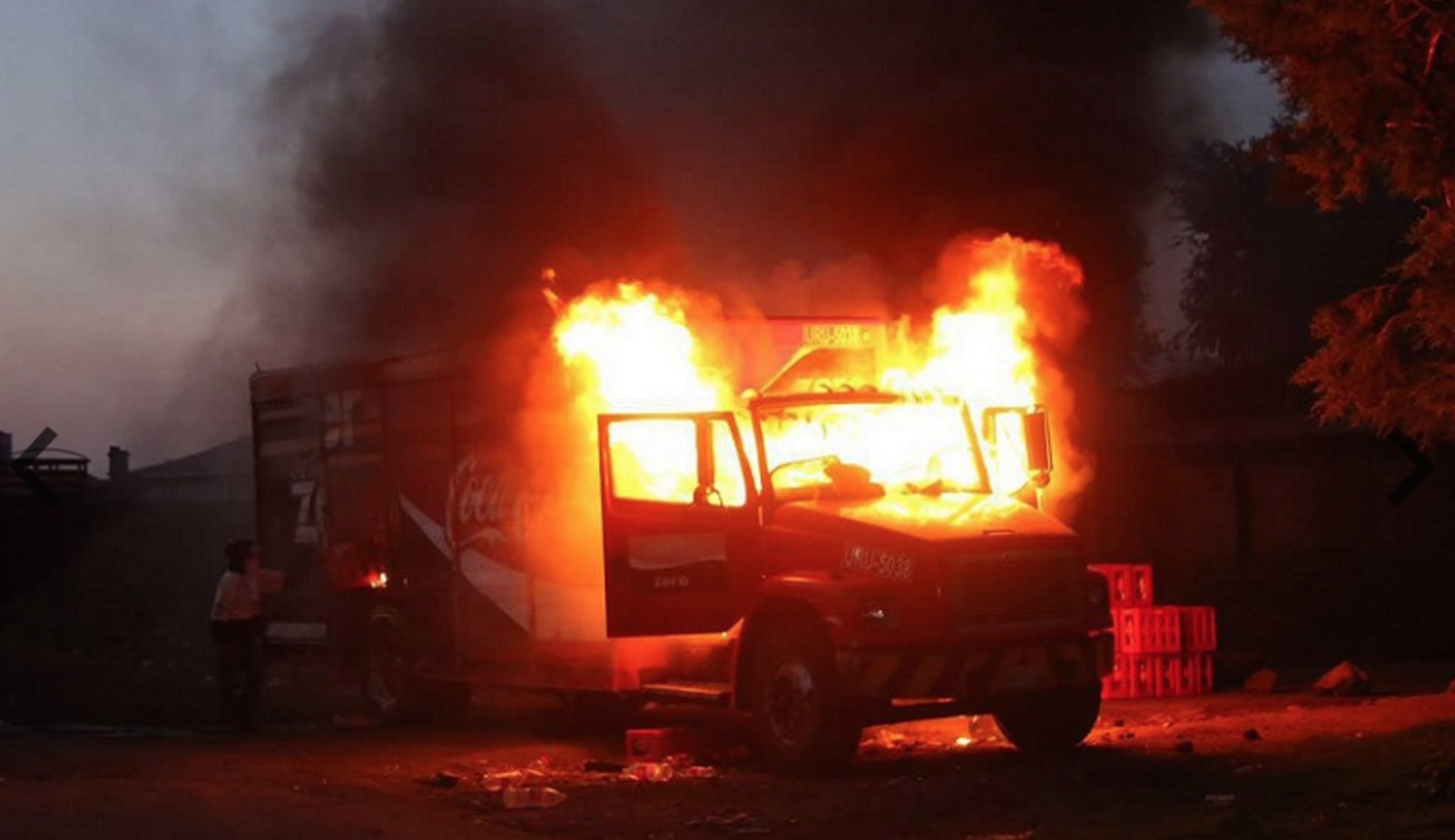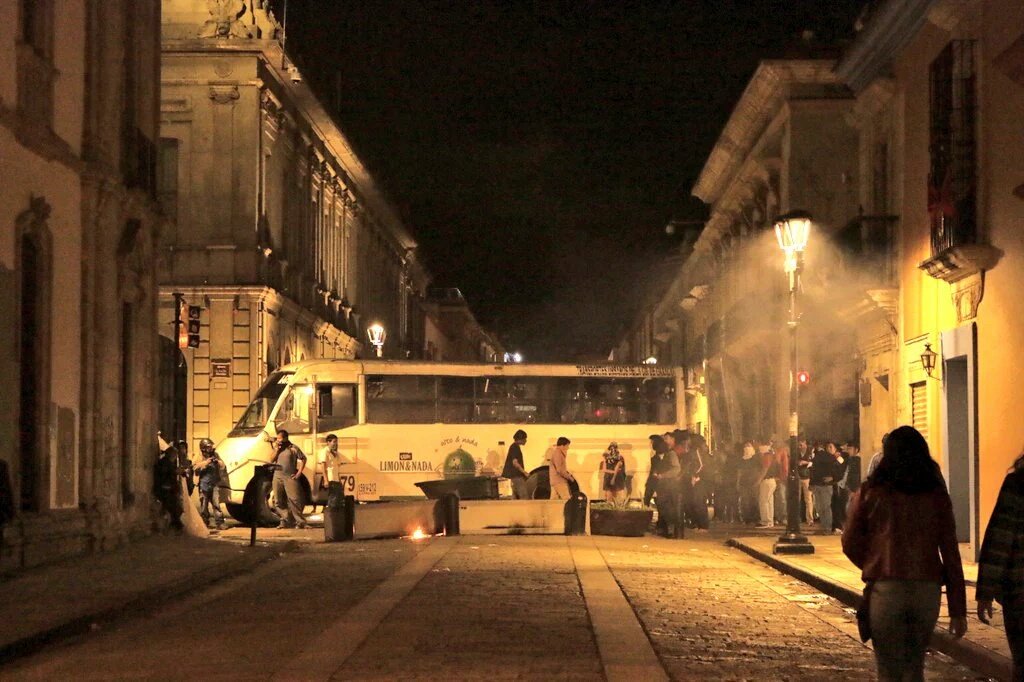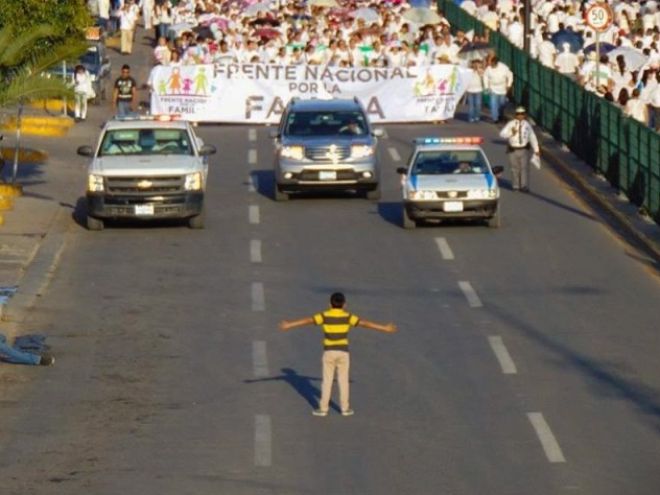Filed under: Editorials, Insumisión, Mexico
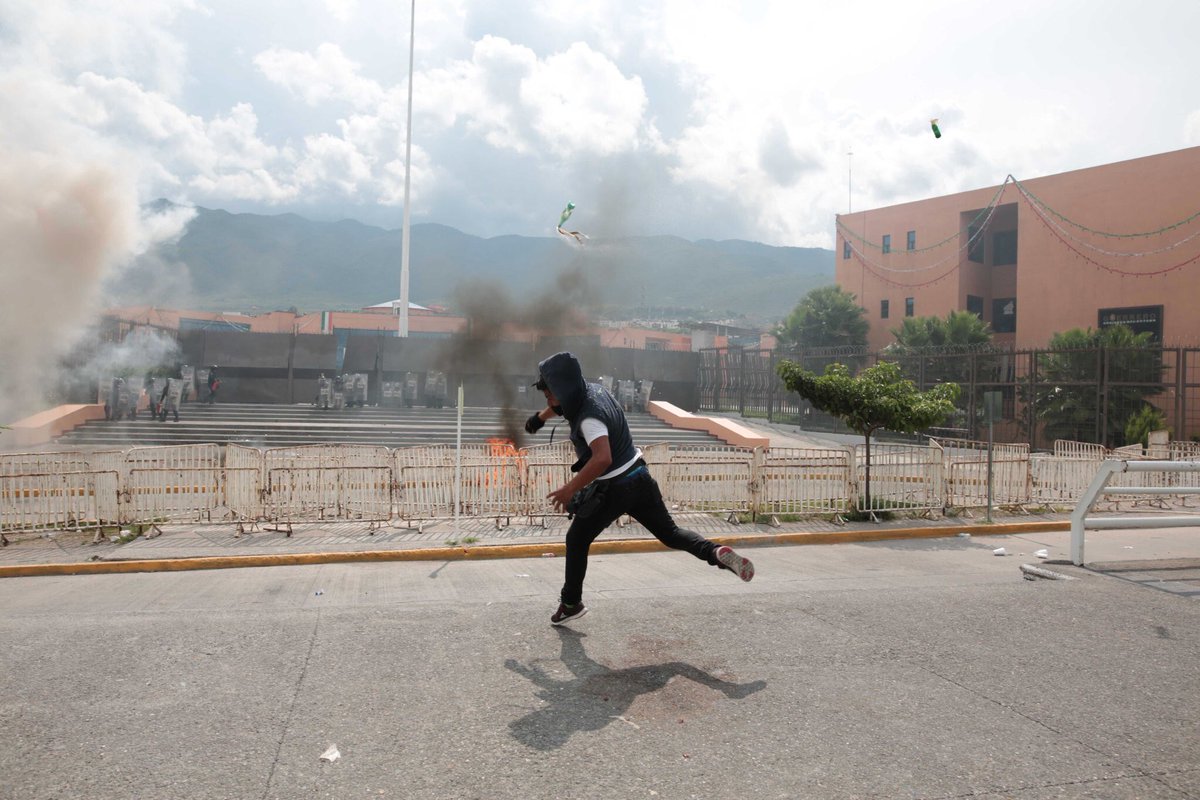
Originally posted to It’s Going Down
By Scott Campbell
Several significant events have unfolded during the past couple weeks in Mexico, from an end the teachers’ strike to the commemoration of major key dates for the resistance. As ever, the repression and impunity with which the Mexican state operates has continued unabated. There’s a lot to cover, so let’s jump right in.
Ayotzinapa
On September 26, 2014, students from the Raúl Isidro Burgos Rural Teachers’ College in Ayotzinapa, Guerrero were traveling to Mexico City to participate in the annual mobilization marking the October 2, 1968 Tlatelolco massacre. They were intercepted by state forces in Iguala, Guerrero, where police opened fire, killing six – three students and three passersby. Forty-three other students were disappeared and to this day their location and fate remain unknown.
The disappearance of the 43 students led to massive, consistent and militant mobilizations around Mexico that have continued until now, as the students came to symbolize the tens of thousands of disappeared in Mexico and the state’s role in facilitating, enabling and participating in a climate of corruption, terror and impunity. This was only exacerbated after the government proclaimed they had solved the disappearance, emphasizing as a “historical truth” that the students were stopped by local police, handed over to a cartel, killed and then burned in a nearby landfill.
Yet, at least three separate teams of independent forensic experts, including one sent by the Inter-American Commission on Human Rights (IACHR) and another that identifies the remains of the disappeared in Argentina, have declared the state’s version of events to be “scientifically impossible.” The investigators also pointed to the state’s lack of cooperation, manipulation of evidence, torture and outright lies as impeding any hope of revealing the truth. The IACHR team was run out of Mexico due to an intense smear campaign in the media, orchestrated by the federal government. #FueElEstado (It Was the State) has been the rallying cry from the beginning, as 43 families and their supporters have put their shattered lives on hold to ceaselessly pursue truth and justice for their disappeared children.
As the two-year anniversary of the disappearance approached, hundreds of events were planned in every corner of Mexico and the world. And it seemed like the families had achieved a small victory when Tómas Zerón, head of the Criminal Investigation Agency resigned. Identified by the IACHR team as one of the main parties responsible for the cover-up, the families had called off negotiations with the government until he was removed from his post. But the victory was short-lived and the malicious face of the state revealed yet again as the following day it was announced he resigned only to be promoted to the position of Technical Secretary of the National Security Council.
In another shot at the movement, Luis Fernando Sotelo, who was arrested during actions for Ayotzinapa in 2014, was sentenced to an outrageous 33 years in prison on September 20. Another arrestee from an Ayotzinapa action in 2015, César, is currently being forced to pay the state 420,000 pesos or face three years in prison and is seeking support.
Response to Sotelo’s sentencing was immediate and took many forms. It was denounced in a statement by the Network Against Repression and for Solidarity and in a joint Zapatista and National Indigenous Congress statement on Ayotzinapa. In the streets, compas wheatpasted and graffitied in support of Sotelo and also put up a flaming blockade on Insurgentes Avenue. A group of anarchists released a video statement demanding his release and gave the state 48 hours as of September 26 to provide answers to the Ayotzinapa families “or suffer the consequences.” Currently, Sotelo is one of six anarchist prisoners in Mexico City who began a hunger strike on September 28 in solidarity with the ongoing prison strike in the U.S. and against his sentence and that of the prisoners from San Pedro Tlanixco. It’s Going Down will have a translation of their statement on the strike up shortly.
Bloque anarquista respecto a los 2 años de ayotzinapa y la condena a #LuisFernandoSotelo pic.twitter.com/hlgyASasVc
— RadioZapote (@RadioZapote) September 26, 2016
If the state hoped to deter resistance with Sotelo’s sentence, they were sorely mistaken. As the father of one of the disappeared said, “What I love is my son. I can’t describe what it feels like for him to be disappeared. I say this to the people who are bothered that we protest and have actions here and there in order to find our children, to demand justice. What would you do if your child was disappeared? Would you remain seated doing nothing or would you search for them? If there was a chance you’d see them again, what would you do?”
The weekend leading up to September 26 saw numerous actions. On September 24, students from Ayotzinapa blockaded the Mexico City-Acapulco highway with commandeered tractor trailers, distributing their contents to drivers. On the same day, students organized a fare-hopping action (#PosMeSalto) in the Mexico City metro. They also took over a toll booth in Puebla.
Normalistas de #Ayotzinapa toman algunos camiones de productos y los regalan a los transeuntes en la Autopista del Sol.
¡Vivos los queremos! pic.twitter.com/YufHSdeww3— Regeneración Radio (@regeneracion_r) September 24, 2016
Normales Rurales de #FECSM realizan #PosMeSalto x #Ayotzinapa y x la libertad de #PresosPoliticos de #Michoacan vía @PlantonxAyotzi pic.twitter.com/LlWBstmvQO
— Regeneración Radio (@regeneracion_r) September 24, 2016
Normalistas de la FECSM toman la caseta de San Marcos, Puebla, exigen la presentación con vida de los 43 desaparecidos. #Ayotzinapa243 pic.twitter.com/UaZDn5gvxM
— Regeneración Radio (@regeneracion_r) September 25, 2016
In Chilpancingo, the capital of Guerrero, Ayotzinapa students took their fight to the state, shooting fireworks at a military base on September 24 and heaving molotovs at police amidst a fog of tear gas on September 25. On that day, seven were arrested. All were severely beaten by police, with four requiring hospitalization.
#Mexico: Students of #Ayotzinapa launch rockets against an army base in #Chilpancingo, #Guerrero, Sep 24. Video Ezequiel Flores pic.twitter.com/fqZchDk2BO
— ubique (@PersonalEscrito) September 26, 2016
#ayotzinapa #students launches #molotov coktails against the #cityall on #chilpancingo #guerrero #mexico #43 pic.twitter.com/fcIt6wa7fi
— jorge dan lopez (@JDyablopix) September 26, 2016
September 26 culminated with thousands marching to the Zócalo in Mexico City for a rally led by the parents that ended with a rendition of “Venceremos” and a count from 1 to 43.
#Mexico City marking 2 years since the disappearance of 43 students of #Ayotzinapa. #AyotzinapaDosAños #Ayot2inapa pic.twitter.com/VEynydVwlc
— ѕyndιcalιѕт (@syndicalisms) September 26, 2016
Concluye el mitin con el Himno Venceremos y el conteo:1,2,3,45,6,7,8,9,10…41,42,43 #Justicia #Ayotzinapa pic.twitter.com/sdZ6mn384U
— Regeneración Radio (@regeneracion_r) September 27, 2016
The following day, teaching college students in Michoacán kept up the struggle with a highway blockade that was also calling for more teaching positions for their schools’ graduates. In response, federal and state police drove up to the blockade and opened fire. As many fled into the hills, it is still unknown how many were wounded. Forty-nine students, mainly women, were arrested. In spite of the police attack, the students have said the repression will only cause them to escalate their actions.
Teachers’ Strike
On September 12, teachers in Chiapas blockaded the state capitol building, the state congress, the city hall of Tuxtla Gutiérrez, and the state offices of the Ministry of Housing and the post office, giving the appearance that the teachers’ movement remained steadfast in the southeast corner of Mexico. Yet that same day, Luis Miranda Nava, the Minister of Social Development, flew to Chiapas on the presidential plane to meet with the governor and several other high-ranking state and police officials, as well as the leadership of National Coordinator of Education Workers (CNTE) Sections 7 and 40.
Following that meeting, the teachers held an assembly and decided to seek “a political exit” from the strike. The next day, on September 13, teachers from Guerrero, Chiapas and Michoacán left the national CNTE encampment in Mexico City, leaving behind only a small group of teachers from Oaxaca. In a subsequent assembly on September 15, the Chiapan teachers voted to end the strike and return to classes on September 19. With teachers in Oaxaca deciding to return to classes on September 7, and the teachers in Michoacán also voting on September 15 to end the strike, the 124-day strike can be considered over.
What is the result of four months of struggle? What went right and what went wrong? A critical analysis of events is beyond the scope of this column, though for those who read Spanish, this essay offers an insightful look into the teachers’ struggle in Oaxaca. Those who came out best in the struggle are the teachers in Chiapas, where the government, if it keeps its word, has pledged to not implement the educational reform in Chiapas for the remainder of Enrique Peña Nieto’s term, to unfreeze the union’s bank accounts and pay back wages, rescind outstanding arrest warrants against movement members, and invest tens of millions in school infrastructure. In Oaxaca, the teachers started negotiations with the government again on September 20, but no agreements have yet been reached. As for Guerrero, Michoacán and Mexico City, it’s not clear if negotiations or government concessions occurred.
At the end of the day, the educational reform remains in place. Its repeal was the primary demand of the strike. The fact that different states arrived at different arrangements with the federal government in what started as a national strike speaks to a lack of cohesion among CNTE sections. And just as public sympathy and mobilization in support of the teachers was at its peak following the massacre in Nochixtlán, the teachers accepted the carrot of negotiations offered to it by the state. Entering into weeks of fruitless negotiations brought the struggle off the streets and behind closed doors, deflating the momentum it had acquired, just as the government hoped it would. When the CNTE finally had enough of talking in circles, the school year was about to start and the government had thousands of federal forces in place in Oaxaca and Chiapas. Faced with the threat of physical force and the loss of popularity as the strike meant children went without education, one by one the sections returned to class. Lastly, the CNTE stayed true to its roots. First and foremost, it is a teachers union, not a revolutionary movement. While the CNTE adopted more populist rhetoric, calling for the repeal of all neoliberal reforms, and the street responded in support, the street also urged the teachers not to abandon the struggle and to keep in mind the demands and sacrifices of the people. Throughout its history of often impressive struggle, the CNTE has consistently, like a moth to a flame, been demobilized by offers of access to power. To actually endeavor to repeal all neoliberal reforms would essentially mean overthrowing the existing social, economic and political order in Mexico. The CNTE is not built for that, nor as it is currently constituted and functions should it be a desirable vehicle for revolutionary change.
Despite its flaws, the CNTE displayed tremendous fortitude, with the support of many sectors of society, in maintaining a four-month national strike in the face of a massacre, widespread police violence, an intransigent government, powerful business lobbies, firings, fines and imprisonment, and a media apparatus whose sole mission was to defame it. It consistently brought hundreds of thousands of people out into the streets, coordinated national actions, and effectively shut down interstate commerce in Chiapas and Oaxaca at-will. The union displayed a willingness to listen to the people, holding countless meetings and assemblies with parents, workers, farmers, local authorities, indigenous communities, and civil society organizations. It presented an analysis of the educational and economic crises facing Mexico and through collaboration with communities offered alternative proposals. And from the start, the CNTE’s demands went beyond issues of wages or working conditions, but included opposition to neoliberalism, justice for Ayotzinapa, freedom for political prisoners and more. More impressively, they did this without getting paid for four months and with all union bank accounts frozen. For all it may lack, the CNTE also offers important lessons when it comes to confronting capitalism and the state. To truly challenge the neoliberal narcostate in Mexico would require social movements with comprehensive analyses and representation to mobilize with the determination, discipline and support that the CNTE is capable of mustering and providing from and for its members.
Independence?
September 16 is Mexico’s Independence Day. The evening before, the president in Mexico City and the governors in each state give a “grito,” a shout/cry of “Viva México” and the like in each state’s respective Zócalos, imitating the one given by Miguel Hidalgo that supposedly helped jumpstart Mexico’s War of Independence. It’s become a tradition for social movements to hold alternative gritos and/or to try to interrupt the official one, and 2016 was no different.
In Mexico City, around 15,000 people participated in a decidedly liberal march calling for Enrique Peña Nieto to resign for being “inept.” They were blocked from reaching the Zócalo by rows of police, where Peña Nieto gave his grito to crowds bused in from outside of the city.
La marcha por la renuncia de Enrique Peña Nieto pasa por Reforma e Insurgentes #RenunciaYa #FueraPeña #VivaMexico pic.twitter.com/p1J9gB2RO8
— Alejandro Meléndez (@alexmelon) September 15, 2016
In Oaxaca, teachers tried to march on the Zócalo to prevent Governor Gabino Cué from giving the grito. They clashed with police, who fired tear gas directly at demonstrators. One teacher was hit in the face and had to be transported to Puebla to receive specialized medical attention. Teachers then regrouped at their union hall nearby and fought back with fireworks. In response, the government cut the signal to the teachers’ radio station, Radio Plantón.
#URGENTE @Policia_GobOax lanza gas lacrimógeno en Zócalo de #Oaxaca para replegar.manifestantes vídeo: @rojasayuzo pic.twitter.com/SjPLT6htUb
— Voces Oaxaca (@VocesOaxaca) September 16, 2016
Profesores de la @Seccion22Cencos comienzan a resistir ante ataque de la @Policia_GobOax pic.twitter.com/1gHpaRxCm3
— Alexis Añorve (@appo_stol) September 16, 2016
Graco Ramírez, the deeply unpopular governor of Morelos, gave his grito surrounded by police and sheet metal barricades to keep protesters out. Nonetheless, their heckling, whistles and cries of “Graco out!” reached the Zócalo. In Cancún, Quintana Roo, two students were shoved into a police vehicle by plainclothes cops, forced to share the contents of their phones, and were driven around while being beaten before being dumped on the outskirts of the city. All for the egregious crime of holding a protest sign.
The governor of Chiapas, Manuel Velasco, was forced to hold the grito in Tapachula, as the teachers were still occupying the central square in the capital of Tuxtla Gutiérrez. Tapachulans tried to put a stop to those plans, clashing with police on both September 14 and 15. Meanwhile in Palenque, before the mayor could give his grito, hundreds of masked Zapatista supporters took over the Zócalo and used a ladder to reach the balcony where the grito would’ve be given, where a cry against the state and capitalism was heard instead.
Also in Chiapas, students, professors and indigenous organizations have taken over three campuses of the Intercultural University of Chiapas (UNICH), demanding the rehiring of 30 fired professors, “respect for the intercultural educational model” and for the university to support the demands of the teachers’ movement. A partial victory was achieved when the president of the UNICH-Las Margaritas campus resigned on September 20. As always, repression continues against indigenous communities in the state. The community of San Francisco, Teopisca, adherents to the Sixth Declaration, denounced a blockade put in place against their community by paramilitaries belonging to the Green Party, the ruling party in the state. In the autonomous community of Ejido Tila, gunmen attempted to assassinate Manuel Martínez Pérez, a local organizer, firing 11 rounds through the window of his home. Meanwhile, two political prisoners from the community of San Sebastián Bachajón, Esteban Gómez Jiménez and Santiago Moreno Pérez, are requesting solidarity to end the harassment, assaults and medical neglect they are facing on the inside, just as the community itself is condemning the most recent state police invasion of their lands. Finally, in addition to the statement on Ayotzinapa, the Zapatistas released a contemplative, non-specific “Invitation to ‘CompArte and ConCiencias for Humanity.’”
In Brief
In addition to all of the above, there is more to share from the past two weeks in Mexico. Before wrapping up, here are a few other stories from that time frame. On September 11 and September 24, Mexico saw large right-wing, homophobic “Marches for the Family” take place against gay marriage, adoption rights for gay partners and abortion. A twelve-year-old boy knew just what to do when faced with 11,000 homophobes in Celaya, Guanajuato: block their march. The September 24 march included the participation of neo-Nazis, filmed trying to be intimidating in the Mexico City metro.
https://twitter.com/MexicAnarchist/status/779793383870967808
On September 13, activist and journalist Augustín Pavía Pavía was killed in Oaxaca. The next day, Oaxacan teacher Jorge Vela Díaz was killed outside his school. Also on September 14, in neighboring Puebla, the editor of El Grafíco de la Sierra, Aurelio Campos Cabrera, was assassinated outside of his home, making him the tenth journalist killed in Mexico this year.
Sección 22 vela restos de profesor asesinado en Ocotlán frente al Palacio de Gobierno de Oaxaca pic.twitter.com/ixX5PgwN8Q
— Tucán Oaxaca (@Revista_Tucan) September 15, 2016
Also in Oaxaca, political prisoner Adán Mejía was released on September 16. On September 19, marches and highway blockades marked three months since the Nochixtlán massacre. While online, numerous independent media outlets published the same article, providing extensive documentation of the police targeting and killing of Yalid Jiménez in Nochixtlán.
Marcha a 3 meses de la masacre en Nochixtlán. pic.twitter.com/85j0yjnaZM
— Proyecto Ambulante (@proamboax) September 19, 2016
Bloqueo sobre la pista a la altura de #Nochixtlán. La resistencia continúa. pic.twitter.com/YUaHMdvixM
— Proyecto Ambulante (@proamboax) September 20, 2016
The 80,000-strong Independent National Democratic Farmworkers Union (SINDJA) in San Quintín released a statement emphasizing that the boycott of Driscoll’s Berries continues. Recognizing that the many struggles in Mexico and the world are linked, they also expressed solidarity with the #NoDAPL fight and commemorated two years since the disappearance of the students from Ayotzinapa. For those in northern and central California, on October 15 there will be a protest at Driscoll’s distribution center near Watsonville in response to SINDJA’s call to push the boycott forward.
#NoDAPL #StandingRock #SanQuintín #Sindja #BoycottDriscoll's @DuelesMexico @LolaReinadelSur @Loe_25sept @Omarel44 pic.twitter.com/kNa9HNlBYL
— gracida (@gracida777) September 18, 2016
#SanQuintín con #Ayotzinapa 2 años de dolor. @Omarel44 @DuelesMexico @epigmenioibarra @Loe_25sept @Aust4Ayotzina @LolaReinadelSur @ pic.twitter.com/VCZu8Z5oBB
— gracida (@gracida777) September 25, 2016
Earlier this month, former political prisoner and indigenous Yaqui leader Mario Luna made a solidarity visit to Standing Rock. In Nayarit, indigenous Wixaritari communities marched from Jalisco to reclaim 184 hectares of their ancestral lands from ranchers, the first direct action in an attempt to recuperate 10,000 hectares. For those who read Spanish, Desinformémonos has put together a look at the impressive self-managed projects and industries that have arisen in the autonomous indigenous community of Cherán, Michoacán since the 20,000 inhabitants kicked out the state and narcos five years ago. In Tocuila, Atenco, State of Mexico, an 89-year-old and his 56-year-old son were brutally beaten in their home by armed men due to their opposition to the construction of a new international airport and their refusal to sell their lands for that purpose. Anarchists placed a couple explosive devices that destroyed two police vehicles in Ecatepec, State of Mexico, then wrote a snarky communique about it. The president of the Autonomous University of the State of Morelos, Alejandro Vera Jiménez, is currently on hunger strike to protest the policies of previously mentioned Morelos governor Graco Ramírez. Labelling the governor an authoritarian liar, Vera said, “He wants us on our knees, he wants us to die of hunger, he wants us silenced, but we won’t allow it.”
On September 19, activists in New York City protested Enrique Peña Nieto outside of a $1,000/plate Foreign Policy Association World Leadership Forum that he was headlining.
#NYC protests @EPN headlining the @FPA_ORG's $1000/plate "World Leadership Forum Dinner" last night. pic.twitter.com/CpPkdwWBfO
— Scott Campbell (@incandesceinto) September 20, 2016
And to bring this edition to a close, in Playa del Carmen, Quintana Roo, residents frustrated with the lack of sanitation service decided to “bring the trash to the dump” where it belongs.
Having gone without garbage collection, residents "bring trash to the dump" – aka city hall – in Playa del Carmen, #QuintanaRoo, #Mexico. pic.twitter.com/MkH0DAQCXt
— Scott Campbell (@incandesceinto) September 20, 2016


